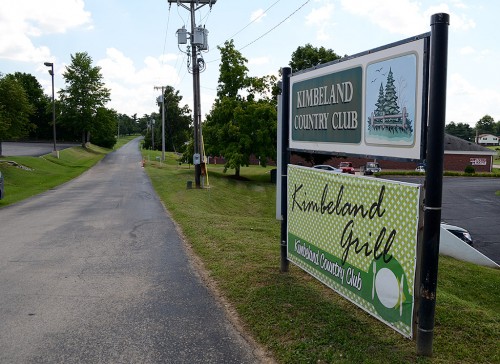 I was trying to figure out where the Hickory House was so I could meet Bill Hopkins for lunch when I saw Kimbeland Country Club on the map.
I was trying to figure out where the Hickory House was so I could meet Bill Hopkins for lunch when I saw Kimbeland Country Club on the map.
That made me think back to the days when about the only thing of note between Cape and Jackson was a magnificent air-conditioned stable and a horse farm with brilliant white fences. Every time we passed there in our 1959 Buick LaSabre station wagon with the windows rolled down in the sweltering heat, Dad would comment that we should be as lucky as the Kimbeland horses.
I drove back to see if there was anything left of the old place, but there wasn’t. I DID find out that the Kimbeland Country Club is celebrating its 50th birthday this year. (Click on the photos to make them larger.)
History of Kimbeland
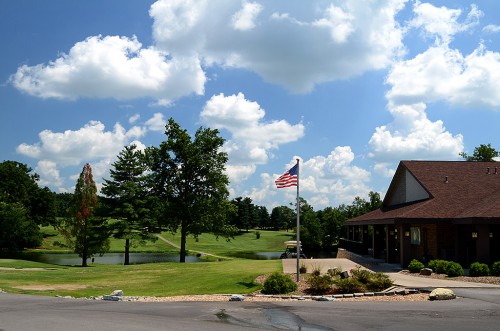 Here’s a history of the country club I found on its website: On July 16, 1962, five members of the Jackson community formed a corporation to start a golf course and country club. These five gentlemen: Robert Wulff, Robert Hartle, Kenneth Kasten, Wilson Lewis and John Schulte Jr. each spent $100 so the corporation could be started. With the help of Paul Mueller, a lawyer from town, they drew up the original by-laws and articles of incorporation for the club to govern their rules and regulations.
Here’s a history of the country club I found on its website: On July 16, 1962, five members of the Jackson community formed a corporation to start a golf course and country club. These five gentlemen: Robert Wulff, Robert Hartle, Kenneth Kasten, Wilson Lewis and John Schulte Jr. each spent $100 so the corporation could be started. With the help of Paul Mueller, a lawyer from town, they drew up the original by-laws and articles of incorporation for the club to govern their rules and regulations.
These original shareholders met with a gentleman named George Kimbel. Mr. Kimbel owned the Kimbeland Farm, which is the land the golf course currently occupies. Even though Mr. Kimbel was not a golfer and didn’t have any interest in playing, he and his wife, Lillian, liked the idea that they could sit on their porch and watch the players enjoying their rounds of golf. George Kimbel agreed to lease the land to build the golf course and loan any monies that were needed at an interest rate of 6.0%. The original plans were to build a nine-hole golf course with a clubhouse, swimming pool and tennis courts, with an additional nine-holes to be added as funds became available. The construction of the original nine-holes began in the fall of 1962 on approximately 78 acres of ground. A five-acre lake was added to the property to serve as the water source for the golf course.
George Kimbel was generous
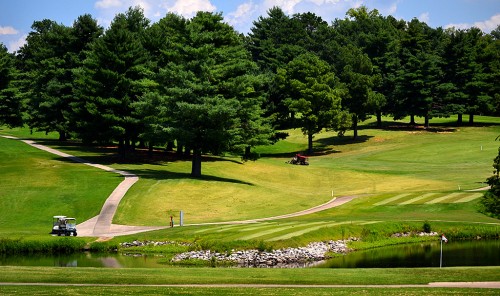 To gather funds together to help pay for the expenses, many of the charter members began traveling around the area trying to sell stock in the corporation. Each share of stock was sold for $100, which enabled the owners to obtain a membership without paying an initiation fee into the club. The Board of Directors set the dues for an annual membership to be $100.00 per year. They were able to get 90 members before the golf course was opened. George Kimbel funded any other monies that were needed to help build the course. Mr. Kimble did not believe in investing his money in stocks or bonds, but he was very generous with his money if he could have his name placed on his investment.
To gather funds together to help pay for the expenses, many of the charter members began traveling around the area trying to sell stock in the corporation. Each share of stock was sold for $100, which enabled the owners to obtain a membership without paying an initiation fee into the club. The Board of Directors set the dues for an annual membership to be $100.00 per year. They were able to get 90 members before the golf course was opened. George Kimbel funded any other monies that were needed to help build the course. Mr. Kimble did not believe in investing his money in stocks or bonds, but he was very generous with his money if he could have his name placed on his investment.
Including the help of the original members, many others including Jack and Jim Litz, Jim and Billy Joe Thompson, Wib Bangert, Palmer Hacker, Hassle Looney, Kelly Blackman, Bill Call, R.O. Hawkins, J.E. Hecker, Gene Cracraft and Bill Heyde Jr. began to put in the efforts to take the farmland and try and turn it into a golf course. Many companies including Kasten Clay Products, Calvin Phillips Excavating, Cape County Commissioners, Charlie Meyer Excavating, Litz Brothers Poultry and Bangert Auto Wrecking Service also donated their time and equipment to help.
Lake added
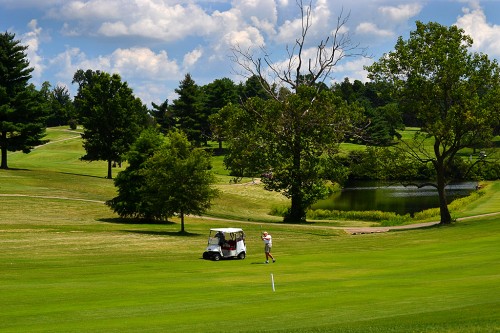 Fencerows and trees were removed, land was tilled, the lake was constructed and the road and water lines were put in.
Fencerows and trees were removed, land was tilled, the lake was constructed and the road and water lines were put in.
With the assistance of Albert Linkogel and Ray Freeburg, a golf course design company from St. Louis, the course was laid out over hilly, wooded land of Southeast Missouri. With recommendations from Linkogel and Freeburg, bent grass greens would be built which ensured that the members would be able to enjoy their golfing season year round. Bob Wulff was instrumental in overseeing the construction of the greens.
Clubhouse opened in 1964
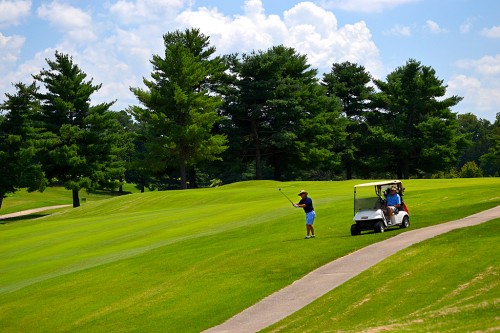 After the golf course opened in the spring on 1963, designs for a clubhouse were drawn. The Board of Directors decided to issue more stock to help fund the construction of the clubhouse. It was built in the fall of ’63 with plans to open in the spring of 1964. Now that the nine-hole golf course had a clubhouse, a motion was made to build a pool. Mr. Kimbel informed the Board of Directors that he would pay for the construction of the pool if he could design the shape. With approximately 300 members in the fall of 1965, the stockholders voted to build an additional nine-holes to make the first eighteen-hole golf course in Cape Girardeau County.
After the golf course opened in the spring on 1963, designs for a clubhouse were drawn. The Board of Directors decided to issue more stock to help fund the construction of the clubhouse. It was built in the fall of ’63 with plans to open in the spring of 1964. Now that the nine-hole golf course had a clubhouse, a motion was made to build a pool. Mr. Kimbel informed the Board of Directors that he would pay for the construction of the pool if he could design the shape. With approximately 300 members in the fall of 1965, the stockholders voted to build an additional nine-holes to make the first eighteen-hole golf course in Cape Girardeau County.
Best course between St. Louis and Memphis
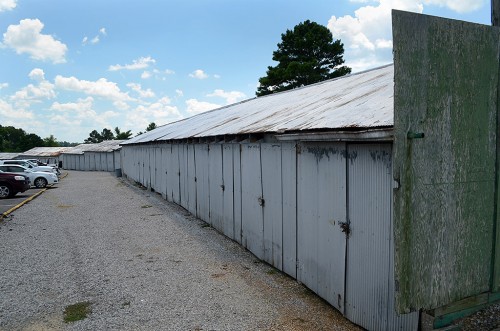 The membership was flourishing and the golf course was improving due to the hard work of the people involved. The golf course superintendents and their staffs kept the golf course in such a shape that it was voted the best golf course from St. Louis to Memphis. Mr. Blevens, a greens keeper from Sikeston was the first superintendent, but due to his lack of experience with bent grass greens, Earl Siebert replaced him. Earl served as the superintendent until 1970, when Sherry Baker took over. Sherry continued to work for Kimbeland as the greens keeper until 1996. David Chasteen took over the helm and served as the superintendent until 2002. Claude Ferguson now holds the position.
The membership was flourishing and the golf course was improving due to the hard work of the people involved. The golf course superintendents and their staffs kept the golf course in such a shape that it was voted the best golf course from St. Louis to Memphis. Mr. Blevens, a greens keeper from Sikeston was the first superintendent, but due to his lack of experience with bent grass greens, Earl Siebert replaced him. Earl served as the superintendent until 1970, when Sherry Baker took over. Sherry continued to work for Kimbeland as the greens keeper until 1996. David Chasteen took over the helm and served as the superintendent until 2002. Claude Ferguson now holds the position.
P.G.A. members serve as golf pros
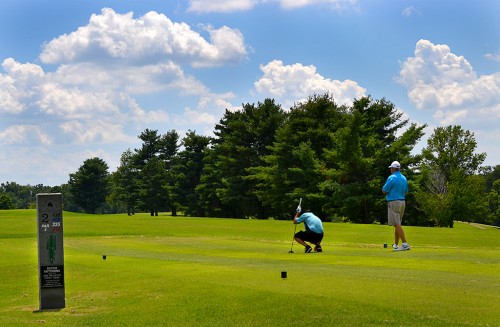 An integral part of having a country club with a clubhouse is to have somebody run the operation. The club hired a man named Penny Crabtree to oversee the business of the clubhouse and pro shop. Penny was replaced by Henry Vogel and then by Jim Thompson. Jim was the first person to own and operate the clubhouse as his own. He hired a kid named Bill Wampler to work for him, who went away to a Professional Golf Association School in Florida. When Bill came back, he took over for Jim and became the first P.G.A. member to be hired as the golf professional at Kimbeland. Many others have succeeded Bill, including Jess Simpson, Wes Duperier, Bill Curry, John Alexander, Brad Krutz, Larry Emery, Doug Dunbar, Todd Eastin and now Jim Davey, but the club has always kept the tradition of having a P.G.A. member serve as their golf professional.
An integral part of having a country club with a clubhouse is to have somebody run the operation. The club hired a man named Penny Crabtree to oversee the business of the clubhouse and pro shop. Penny was replaced by Henry Vogel and then by Jim Thompson. Jim was the first person to own and operate the clubhouse as his own. He hired a kid named Bill Wampler to work for him, who went away to a Professional Golf Association School in Florida. When Bill came back, he took over for Jim and became the first P.G.A. member to be hired as the golf professional at Kimbeland. Many others have succeeded Bill, including Jess Simpson, Wes Duperier, Bill Curry, John Alexander, Brad Krutz, Larry Emery, Doug Dunbar, Todd Eastin and now Jim Davey, but the club has always kept the tradition of having a P.G.A. member serve as their golf professional.
Course remained same until 1996
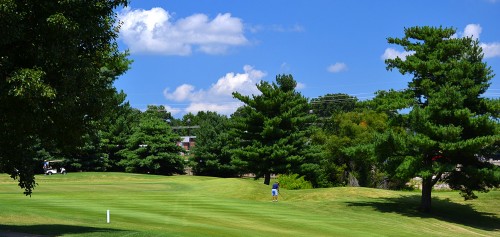 The golf course stayed the same until 1996, when a group headed by Jack Litvay, laid out a new and improved golf course with larger greens and a more challenging layout. The course continues to try and improve with the help of the current Board of Directors and the members. In 2000, golf course architect Art Schaupeter developed a long range plan for Kimbeland’s golf course. A portion of that plan has been completed including adding two additional holes and completely re-building holes 8 and 9. In December of 2006 construction began on a new 7000 square foot clubhouse which was completed in September of 2007.
The golf course stayed the same until 1996, when a group headed by Jack Litvay, laid out a new and improved golf course with larger greens and a more challenging layout. The course continues to try and improve with the help of the current Board of Directors and the members. In 2000, golf course architect Art Schaupeter developed a long range plan for Kimbeland’s golf course. A portion of that plan has been completed including adding two additional holes and completely re-building holes 8 and 9. In December of 2006 construction began on a new 7000 square foot clubhouse which was completed in September of 2007.

Dang…so that is how the rich people live!
When we drove by in the 59 Chevy Bel Aire I always looked at the horse barn too. It was the fanciest place for horse this side of the Blue grass State for sure!
I am sure people will know for sure, but I believe Mr. Kimbel was the owner of the famous Kimbel Truck Lines which used to be headquartered at the southeast corner of Independence Street and Kingshighway. Nice Big white trucks with red lettering, good design on the script, I think ABF bought them out. This is where more of us remember Charlie Harris having his Dodge dealership in the 60’s.
Right you are Terry, unlike many memories where the facts are garbled up. You are precisely correct. Kimble and Tucker were the two primary truck lines connecting Cape and Southeast Mo. Charles Harris had ownership of the dealership and so much more in Cape. He was an outstanding businessman. Dodge was a tough sell. Fred Groves had the dominant car dealership, Ford Groves.
The original Kimbel Truck line was at SW end boulevard and Independence. The mechanic shops were below street level. It is now the site of a Rhodes quick shop. There was another truck line that bought Kimbel before ABF did but I don’t recall the name. My dad worked there several years. ABF later moved to the Nash road.
I believe the truck line after Kimbel sold the line was a truck line called Delta.
My brother, Mike, was a lifeguard at Kimbelland for a few years. He got us permission to search for golf balls in one of the ponds on the course. We would walk along and when we stepped on a golf ball, we would pick it up between our toes. Don’t remember if we got to keep all the balls or had to turn some of them in to the clubhouse.
Was fortunate to play that course several times during my years as a golfer in Cape. Always enjoyed those bent grass greens.
Me and my sibs spent many a loooong afternoon in the pool while Dad played golf. Our fingers and toes would be wrinkled and our eyes practically bleeding from chlorine, but what fun!